
2 minute read
LOOPS: Un immeuble Parisiene
The seminar work was based on an arbitrarily designed tissue sample. The two-dimensional pattern is based on the schematization of the weaving or weaving technique into a graphic image.
Thread: the development of hybrid buildings in the metropolitan network fabric.
Advertisement
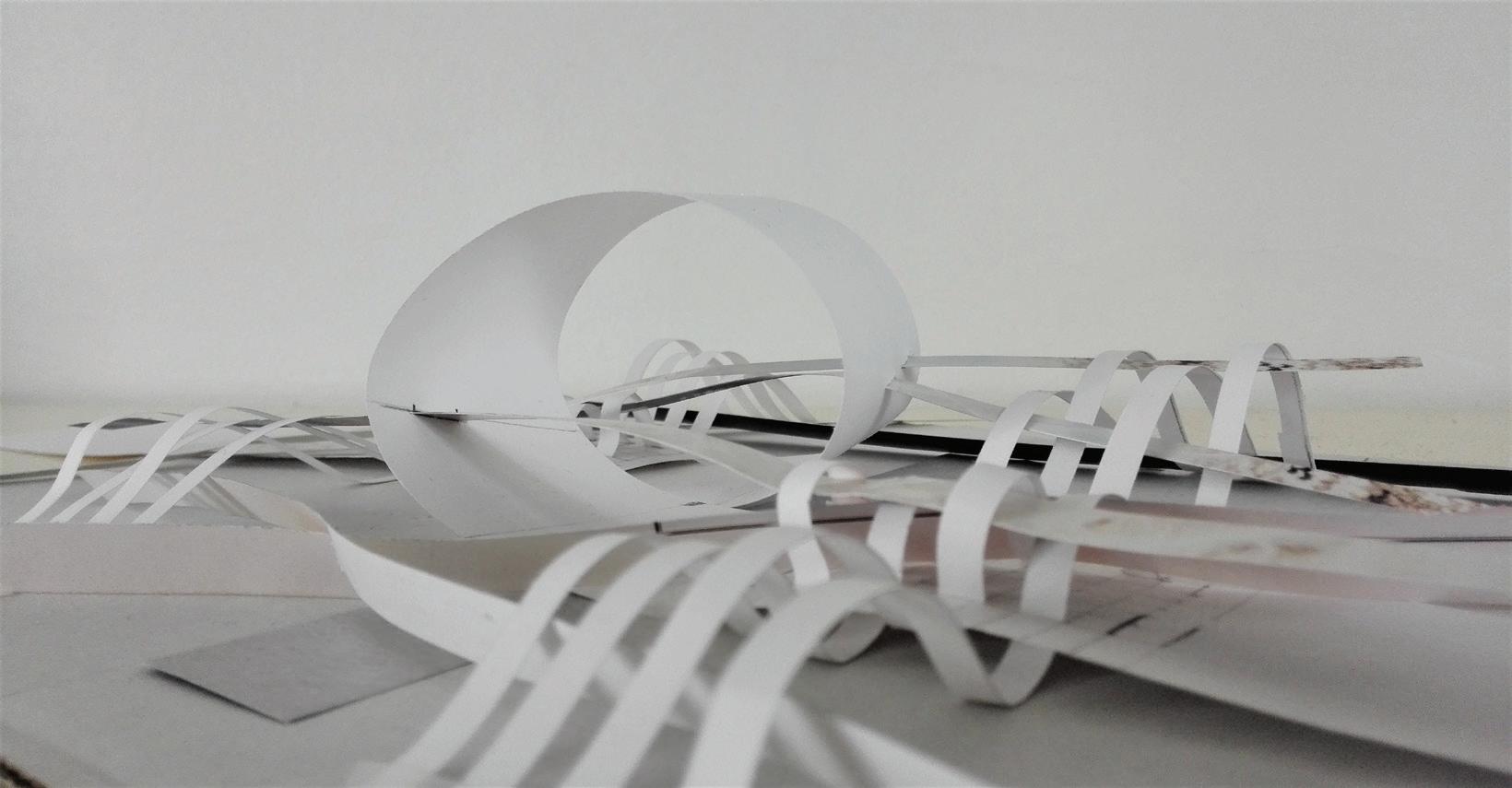
Visualization using paper weaving
The five layers of intangible strips make up the initial pattern. Then with deformations, pulls, punctures, and twists, they grow from the paper surface into a relief with a third dimension.
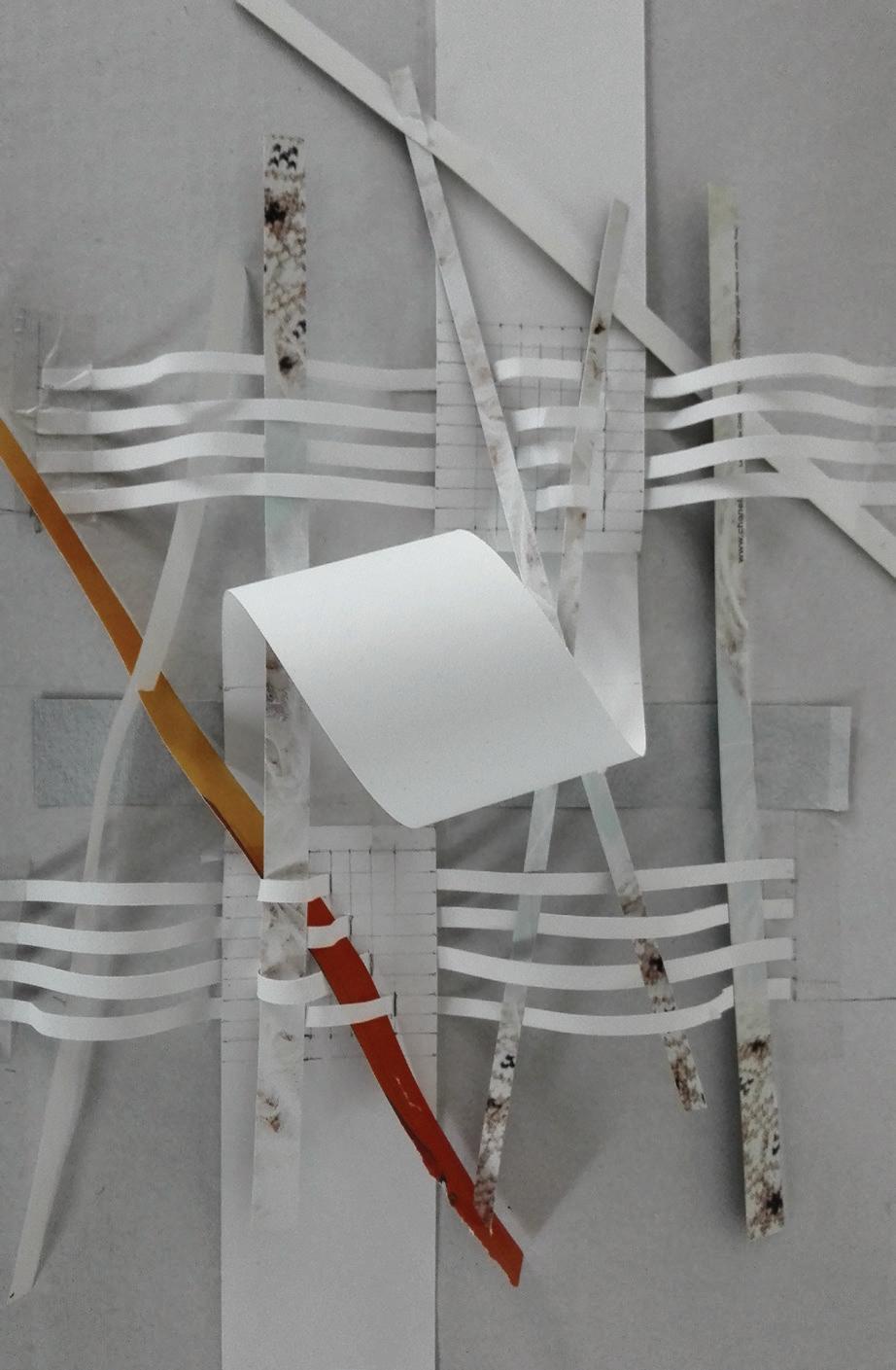
Concept study

Model assesment I
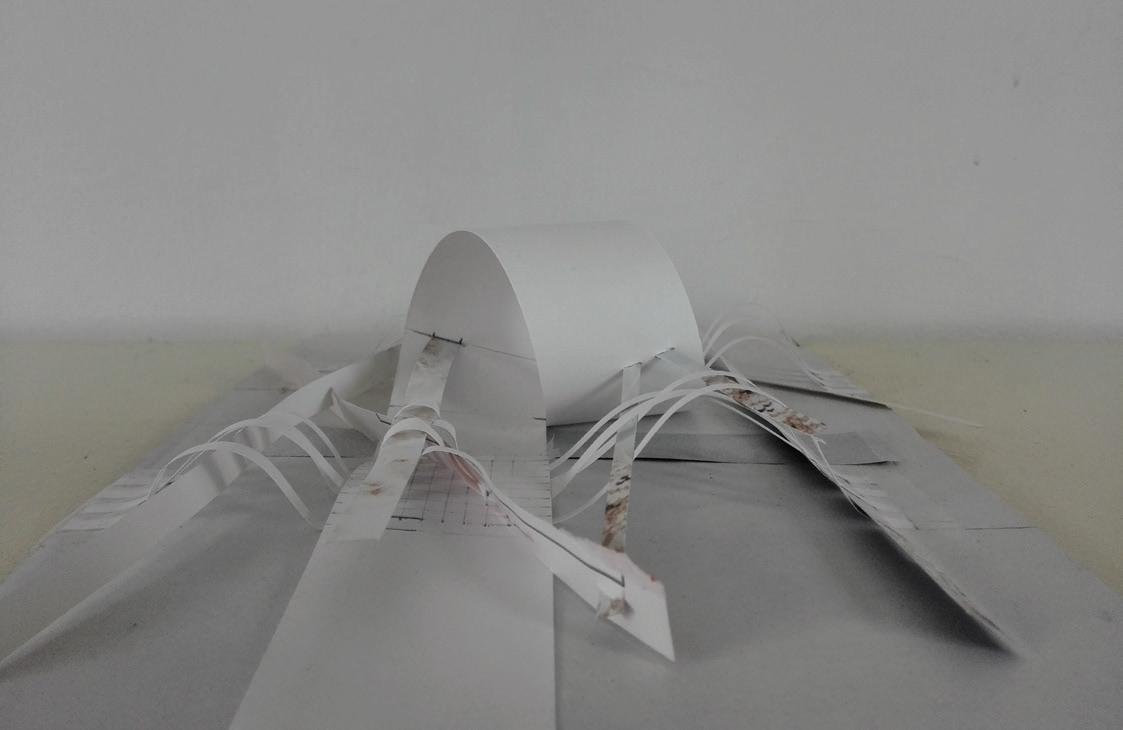
Model assesment II
Weaving in vertical volume
The paper strips are interdependent so that the shape is the result of the transmission and absorption of forces at the places of interlacing. The more the strips are stretched and deformed, the more voluminous the shape they form.

Layer I - Support

Layers II & III - Volume & Vital connections
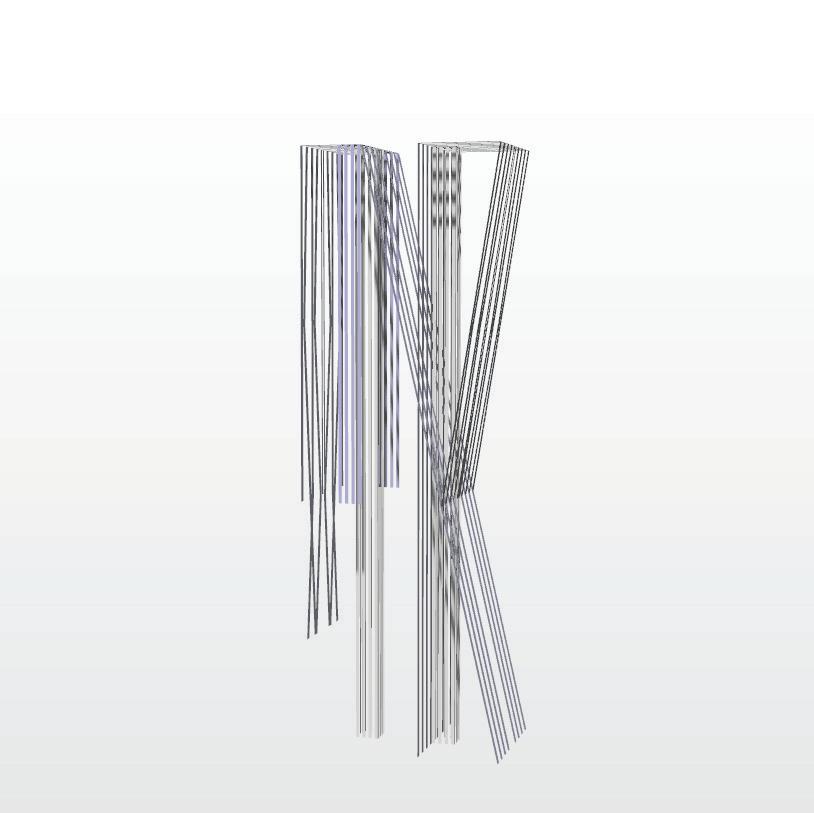
Layer IV - Envelope
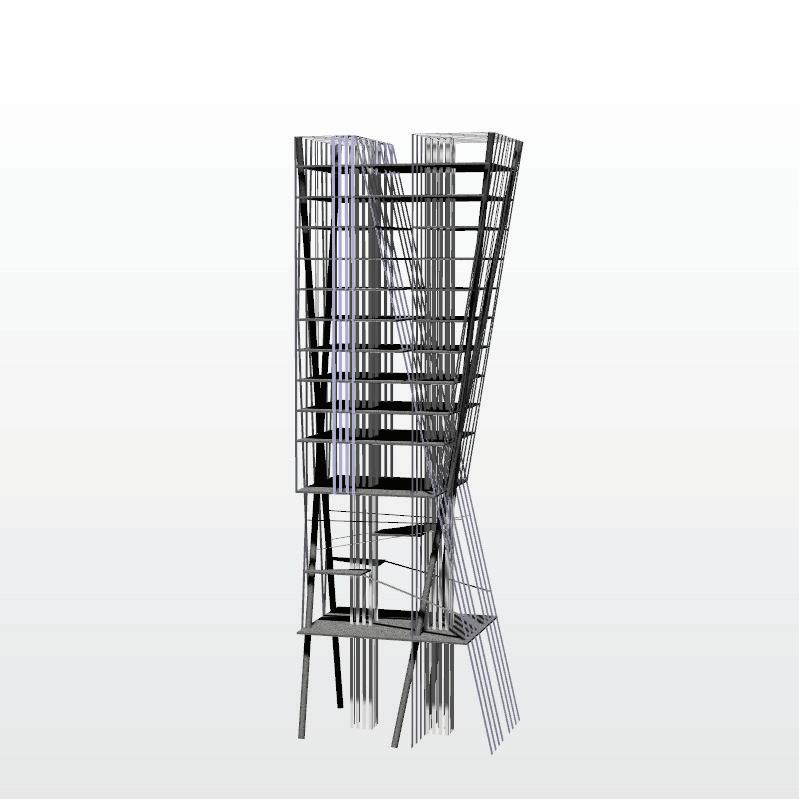
Layer V - Sections
The tower shown in phases of five layers is the result of extreme deformation, but also abstraction of the intertwined pattern.
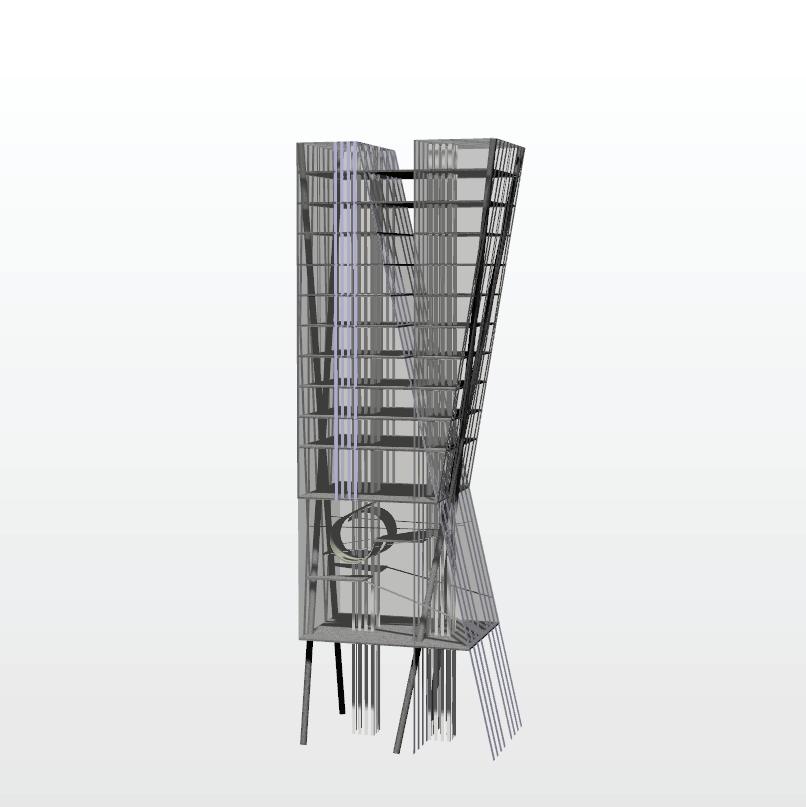
Final volume of the tower
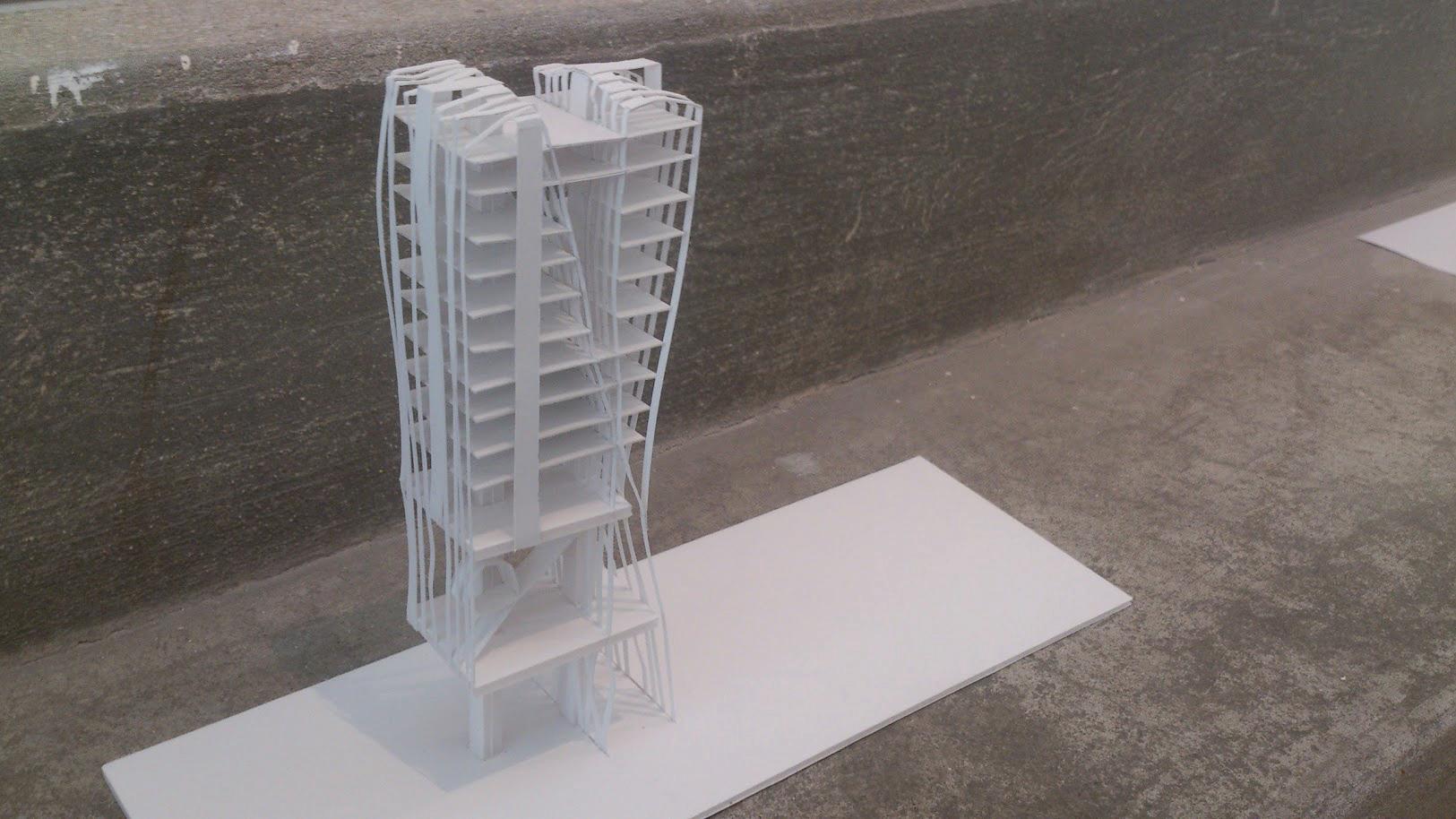
Physical model interpretation
Weaving in an urban plot - Interaction through building and landscaping
The ribbons thus become integral elements of the conceptual design of the construction of each building on the campus. Indoors they divide the volume into smaller spatial sets intended for various program (classrooms, student dormitory, greenhouse, gym, outdoor park arrangement an so on).
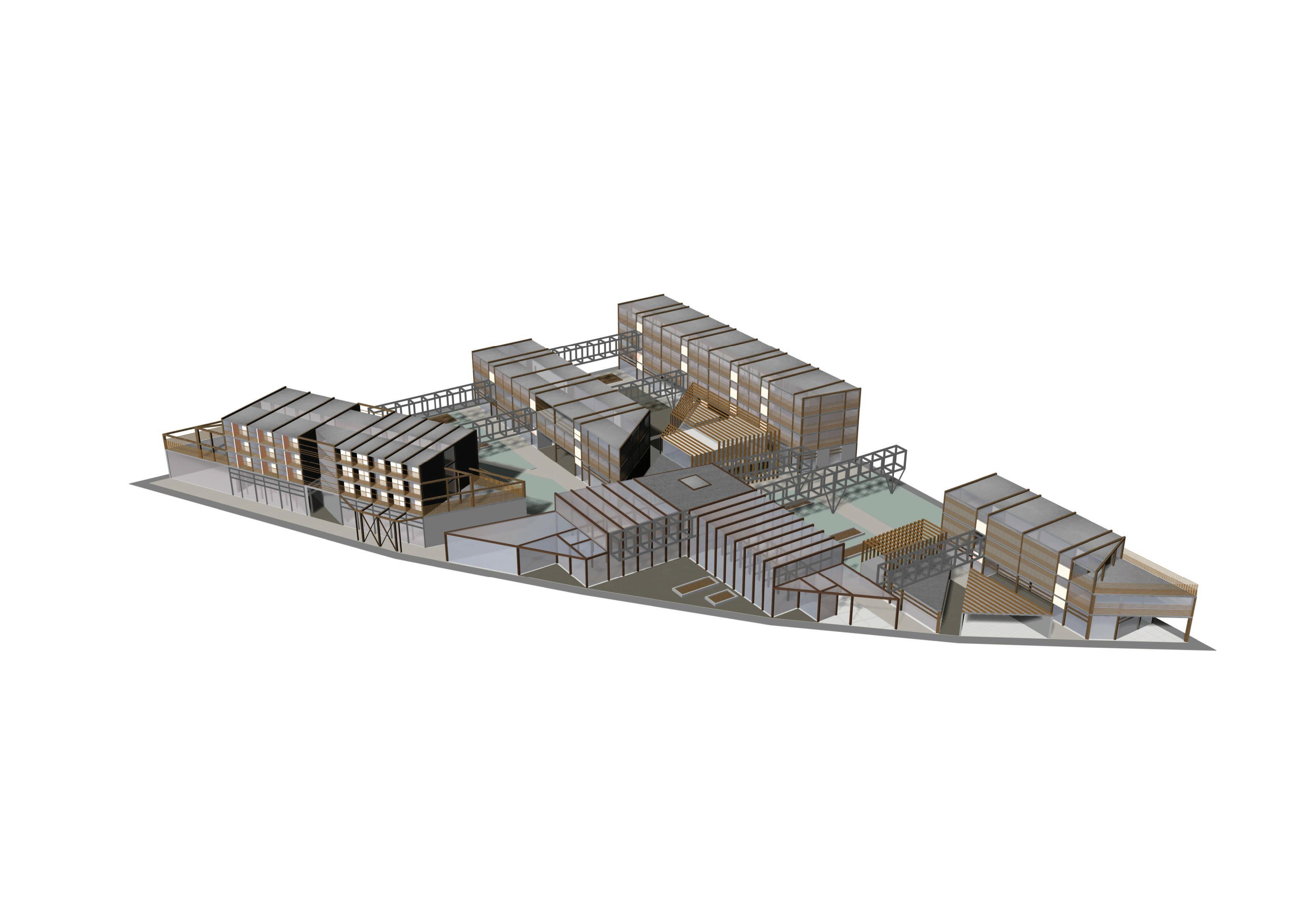
Proposal for the site arrangement
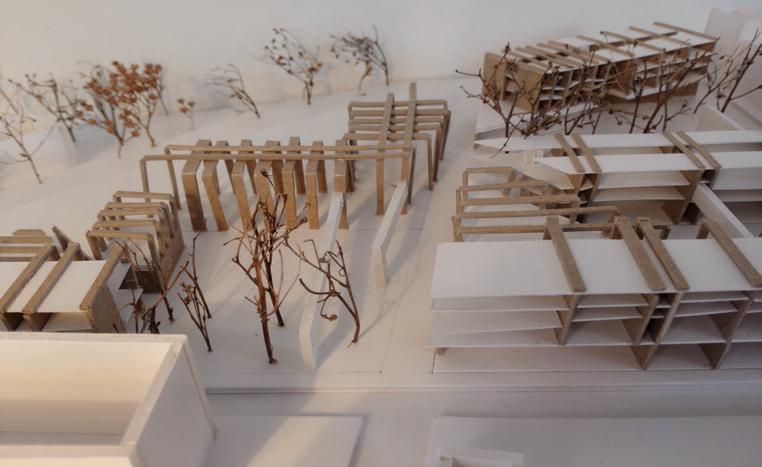
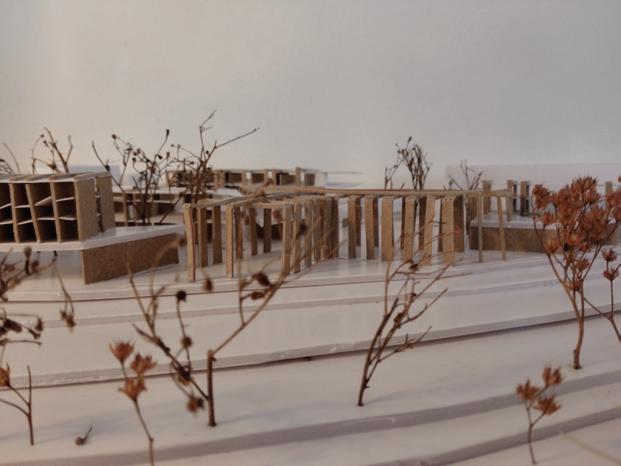
Implementation of paper weaving techniques


The last phase: Transferring the concept to a digital model
By Darja Horvat





